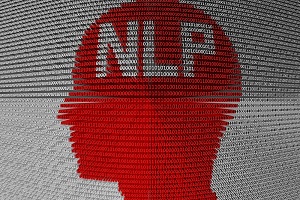Artificial intelligence (AI) continues to have transformative effects on the evolution of society, both within and beyond the B2B space. However, there remain key limitations and scaling issues incumbent to AI and machine learning (ML), which require smart strategies to best overcome.
Natural Language Processing (NLP) is a crucial component in moving AI forward, and something that countless businesses are correctly interested in exploring. If AI and people cannot meaningfully interact, ML and business as usual both hit a frustrating standstill.
Challenges that arise in B2B NLP often stem from a very common issue – the AI use cases in each instance are highly specific to the kind of industry or business model in which they are deployed. These AI and ML systems prove reasonably accurate in their niche areas of focus – but are lagging in broader application potential.
Overcoming the scale of NLP modeling
The amount of data that AI and ML systems need to incorporate a wider range of NLP capabilities are significant. Such systems require a company to proactively identify, procure, and clean data to ensure the models can produce outcomes. A more ‘front loaded’ data first strategy can help overcome this issue before it ever has the chance to become a challenge.
The reasons to perfect this are as multifarious as the industrial sectors NLP works in. While many B2B organizations utilize AI and ML systems to smooth out client relations, handle inquiries and enhance security, NLP is achieving brilliant things in industries around the world.
For example, speech recognition under NLP can automatically transcribe conversations between patients and doctors in the healthcare industry. This radically enhances the efficiency of healthcare professionals, who already work in demanding and time-sensitive roles and it is hoped that eventually ML and NLP can combine to predict future diagnoses.
In the education sector, teachers could spend more time interacting with and guiding students if AI takes over repetitive tasks such as exam question generation. Teachers can literally approve or request new questions. This form of question generation already exists in the game-based learning (GBL) sector.
However, in each of the cases, as described, organizations need to enjoy ML models that are advanced enough to grasp nuance and demonstrate effective NLP – while avoiding the multimillion-dollar investments being made by many tech goliaths in this space.
Strategies when optimizing LLMs for specific business cases
One may anticipate better results when integrating LLMs into some of the existing NLP strategies. That is often because the most popular LLMs – BERT, GPT2, GPT3, RoBERTa, T5, PaLM, etc. – are immense, with millions of parameters at their disposal, and can enable plenty of downstream tasks.
They have been built using vast quantities of text data from a huge range of sources, zero-shot, and few-shot operational scenarios can be a starting point for a successful implementation – yet can also be ill-advised.
Effective LLM use with AI and ML comes with optimizing workflow for specific use cases – while still enjoying their benefits. That means a few best practices are best kept in mind. For example, using an LLM trained on data as close as possible to your domain expertise is a good first step. Similarly, it’s often advantageous to balance your LLM size to be deployed with the speed, efficiency, and level of resource consumption you can sustain for it. Of course, organizations are also wise to continue fine-tuning their LLMs while integrating them into their AI framework too. This not only benefits one’s organization but also continues pushing industry boundaries as a whole.
As time goes on, if the size of your LLM model becomes a concern, look to strategies such as quantization, pruning, knowledge distillation, and so on. These help keep resources at a sustainable level, without sacrificing the capabilities of your NLP AI altogether.
Don’t overlook LLMs’ potential
While plenty of investment and progress into AI is causing great strides, ML and AI benefit from simpler solutions.
LLMs offer the opportunity for a quick start, and many players are considering how to make them useful to their businesses. We advise you to count your organization as one of them – understand their benefits and constraints and wisely use them.
About the Author

Rigvi Chevala is Evalueserve’s chief technology officer (CTO). He has more than 16 years of experience leading high-performing product engineering teams in building enterprise-scale products and applications. In his current role, he is the global head of all technology teams within Evalueserve and works with multiple lines of business to assess, strategize, and deliver software products and projects based on market and customer needs. Mr. Chevala started his career as a full-stack software engineer. Over the years, he has worked with several technology components such as C#, Java, JQuery, AngularJS, SQL Server, Oracle, Github, TFS, Jira, Jenkins, Teamcity, and several other toolsets. Mr. Chevala holds a master’s degree in computer and information sciences from Cleveland State University and a bachelor’s degree in computers and electronics from Jawaharlal Nehru Technology University in Hyderabad.
Sign up for the free insideAI News newsletter.
Join us on Twitter: https://twitter.com/InsideBigData1
Join us on LinkedIn: https://www.linkedin.com/company/insidebigdata/
Join us on Facebook: https://www.facebook.com/insideAI NewsNOW




